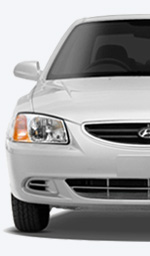 printable version printable version
Economical driving
By following these guidelines, you can save fuel and increase mileage of your car without refueling:
- Drive smoothly and avoid sudden acceleration. Try to move at a constant speed and does not accelerate before stopping;
- Try to maintain the speed of the traffic flow in order to avoid unnecessary speed changes. If possible, avoid driving in heavy traffic conditions. Always keep a safe distance to the vehicle ahead to avoid unnecessary braking. This also reduces brake pad wear;
- Drive at a moderate speed. The higher the speed of the car, the more fuel it consumes. Movement at a moderate speed, especially on highways, it is one of the most effective ways to reduce fuel consumption;
- Do not keep your foot on the brake or clutch pedal. This will lead to increased fuel consumption and an increase in wear of these components. Moreover, the retention of your foot on the brake pedal constantly during driving leads to overheating of the brakes and the loss of their efficiency, which can lead to more serious consequences;
- Watch for the tires of your car, keep the recommended tire air pressure. Improper tire pressure is too small or too large, leading to their premature wear. Check the tire pressure at least once a month;
- Check wheel alignment, because the incorrect wheel alignment can cause excessive wear in the form of spots ("bald spots") on the tread. It can also lead to increased tire wear and increased fuel consumption;
- Do not carry unnecessary items in your car;
- Do not run the engine at idle for longer than is necessary. If you expect anything (and are not in traffic), turn off the engine and run it only when you're ready to start moving;
- Remember the car Hyundai does not need a larger engine warming. Once the speed of the crankshaft of the engine is stable, you can begin to move, but at a very low temperature, allow the engine to warm up a little bit;
- Not "overload" and avoid an excessive increase in the engine speed of the engine. Overloading the engine is moving too slowly too high gear. Turn on the downshift.
- Rationally use the air conditioner as air-conditioning system is driven by energy from the motor, so its use leads to a decrease in fuel economy.
|







